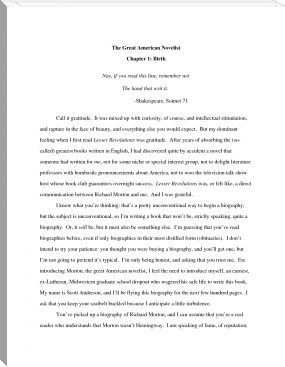History of the Plague in London by Daniel Defoe (reading fiction TXT) 📖

- Author: Daniel Defoe
Book online «History of the Plague in London by Daniel Defoe (reading fiction TXT) 📖». Author Daniel Defoe
If we inquire further into the secret of Defoe's success in the "History of the Plague," we shall find that it consists largely in15 his vision, or power of seeing clearly and accurately what he describes, before he attempts to put this description on paper. As Defoe was but four years old at the time of the Great Plague, his personal recollection of its effects must have been of the dimmest; but during the years of childhood (the most imaginative of life) he must often have conversed with persons who had been through the plague, possibly with those who had recovered from it themselves. He must often have visited localities ravaged by the plague, and spared by the Great Fire of 1666; he must often have gazed in childish horror at those awful mounds beneath which hundreds of human bodies lay huddled together,—rich and poor, high and low, scoundrel and saint,—sharing one common bed at last. His retentive memory must have stored away at least the outline of those hideous images, so effectively recombined many years later by means of his powerful though limited imagination.
Defoe had the ability to become a good scholar, and to acquire the elements of a good English style; but it is certain he never did. He never had time, or rather he never took time, preferring invariably quantity to quality. What work of his has survived till to-day is read, not for its style, but in spite of its style. His syntax is loose and unscholarly; his vocabulary is copious, but often inaccurate; many of his sentences ramble on interminably, lacking unity, precision, and balance. Figures of speech he seldom abuses because he seldom uses; his imagination, as noticed before, being extremely limited in range. That Defoe, in spite of these defects, should succeed in interesting us in his "Plague," is a remarkable tribute to his peculiar ability as described in the preceding paragraph.
16In the course of the Notes, the editor has indicated such corrections as are necessary to prevent the student from thinking that in reading Defoe he is drinking from a "well of English undefiled." The art of writing an English prose at once scholarly, clear-cut, and vigorous, was well understood by Defoe's great contemporaries, Dryden, Swift, and Congreve; it does not seem to have occurred to Defoe that he could learn anything from their practice. He has his reward. "Robinson Crusoe" may continue to hold the child and the kitchen wench; but the "Essay on Dramatic Poesy," "The Battle of the Books," and "Love for Love," are for the men and women of culture.
The standard Life of Defoe is by William Lee (London, J.C. Hotten, 1869). William Minto, in the "English Men of Letters Series," has an excellent short biography of Defoe. For criticism, the only good estimate I am acquainted with is by Leslie Stephen, in "Hours in a Library, First Series." The nature of the article on Defoe in the "Britannica" may be indicated by noticing that the writer (Saintsbury) seriously compares Defoe with Carlyle as a descriptive writer. It would be consoling to think that this is intended as a joke.
Those who wish to know more about the plague than Defoe tells them should consult Besant's "London," pp. 376-394 (New York, Harpers). Besant refers to two pamphlets, "The Wonderful Year" and "Vox Civitatis," which he thinks Defoe must have used in writing his book.
1 At first, a weekly; with the fifth number, a bi-weekly; after the first year, a tri-weekly.
2 Preface to his pamphlet entitled Street Robberies.
3 For a very different estimate, see Saintsbury's Selections from Defoe's Minor Novels.
17
HISTORYOF
THE PLAGUE IN LONDON.
It was about the beginning of September, 1664, that I, among the rest of my neighbors, heard in ordinary discourse that the plague was returned again in Holland; for it had been very violent there, and particularly at Amsterdam and Rotterdam, in the year 1663, whither, they say, it was brought (some said from Italy, others from the Levant) among some goods which were brought home by their Turkey fleet; others said it was brought from Candia; others, from Cyprus. It mattered not from whence it came; but all agreed it was come into Holland again.4
We had no such thing as printed newspapers in those days, to spread rumors and reports of things, and to improve them by the invention of men, as I have lived to see practiced since. But such things as those were gathered from the letters of merchants and others who corresponded abroad, and from them was handed about by word of mouth only; so that things did not spread instantly over the whole nation, as they do now. But it seems that 18the government had a true account of it, and several counsels5 were held about ways to prevent its coming over; but all was kept very private. Hence it was that this rumor died off again; and people began to forget it, as a thing we were very little concerned in and that we hoped was not true, till the latter end of November or the beginning of December, 1664, when two men, said to be Frenchmen, died of the plague in Longacre, or rather at the upper end of Drury Lane.6 The family they were in endeavored to conceal it as much as possible; but, as it had gotten some vent in the discourse of the neighborhood, the secretaries of state7 got knowledge of it. And concerning themselves to inquire about it, in order to be certain of the truth, two physicians and a surgeon were ordered to go to the house, and make inspection. This they did, and finding evident tokens8 of the sickness upon both the bodies that were dead, they gave their opinions publicly that they died of the plague. Whereupon it was given in to the parish clerk,9 and he also returned them10 to the hall; and it was printed in the weekly bill of mortality in the usual manner, thus:—
Plague, 2. Parishes infected, 1.
The people showed a great concern at this, and began to be alarmed all over the town, and the more because in the last week in December, 1664, another man died in the same house and of the same distemper. And then we were easy again for about six weeks, when, none having died with any marks of infection, it 19was said the distemper was gone; but after that, I think it was about the 12th of February, another died in another house, but in the same parish and in the same manner.
This turned the people's eyes pretty much towards that end of the town; and, the weekly bills showing an increase of burials in St. Giles's Parish more than usual, it began to be suspected that the plague was among the people at that end of the town, and that many had died of it, though they had taken care to keep it as much from the knowledge of the public as possible. This possessed the heads of the people very much; and few cared to go through Drury Lane, or the other streets suspected, unless they had extraordinary business that obliged them to it.
This increase of the bills stood thus: the usual number of burials in a week, in the parishes of St. Giles-in-the-Fields and St. Andrew's, Holborn,11 were12 from twelve to seventeen or nineteen each, few more or less; but, from the time that the plague first began in St. Giles's Parish, it was observed that the ordinary burials increased in number considerably. For example:—
The like increase of the bills was observed in the parishes of St. Bride's, adjoining on one side of Holborn Parish, and in the 20parish of St. James's, Clerkenwell, adjoining on the other side of Holborn; in both which parishes the usual numbers that died weekly were from four to six or eight, whereas at that time they were increased as follows:—
Besides this, it was observed, with great uneasiness by the people, that the weekly bills in general increased very much during these weeks, although it was at a time of the year when usually the bills are very moderate.
The usual number of burials within the bills of mortality for a week was from about two hundred and forty, or thereabouts, to three hundred. The last was esteemed a pretty high bill; but after this we found the bills successively increasing, as follows:—
21This last bill was really frightful, being a higher number than had been known to have been buried in one week since the preceding visitation of 1656.
However, all this went off again; and the weather proving cold, and the frost, which began in December, still continuing very severe, even till near the end of February, attended with sharp though moderate winds, the bills decreased again, and the city grew healthy; and everybody began to look upon the danger as good as over, only that still the burials in St. Giles's continued high. From the beginning of April, especially, they stood at twenty-five each week, till the week from the 18th to the 25th, when there was13 buried in St. Giles's Parish thirty, whereof two of the plague, and eight of the spotted fever (which was looked upon as the same thing); likewise the number that died of the spotted fever in the whole increased, being eight the week before, and twelve the week above named.
This alarmed us all again; and terrible apprehensions were among the people, especially the weather being now changed and growing warm, and the summer being at hand. However, the next week there seemed to be some hopes again: the bills were low; the number of
 Have you ever thought about what fiction is? Probably, such a question may seem surprising: and so everything is clear. Every person throughout his life has to repeatedly create the works he needs for specific purposes - statements, autobiographies, dictations - using not gypsum or clay, not musical notes, not paints, but just a word. At the same time, almost every person will be very surprised if he is told that he thereby created a work of fiction, which is very different from visual art, music and sculpture making. However, everyone understands that a student's essay or dictation is fundamentally different from novels, short stories, news that are created by professional writers. In the works of professionals there is the most important difference - excogitation. But, oddly enough, in a school literature course, you don’t realize the full power of fiction. So using our website in your free time discover fiction for yourself.
Have you ever thought about what fiction is? Probably, such a question may seem surprising: and so everything is clear. Every person throughout his life has to repeatedly create the works he needs for specific purposes - statements, autobiographies, dictations - using not gypsum or clay, not musical notes, not paints, but just a word. At the same time, almost every person will be very surprised if he is told that he thereby created a work of fiction, which is very different from visual art, music and sculpture making. However, everyone understands that a student's essay or dictation is fundamentally different from novels, short stories, news that are created by professional writers. In the works of professionals there is the most important difference - excogitation. But, oddly enough, in a school literature course, you don’t realize the full power of fiction. So using our website in your free time discover fiction for yourself. 




Comments (0)